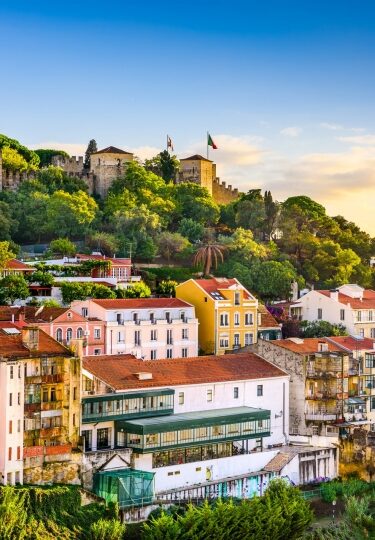Sprawling over seven hills, each with sweeping panoramic views, Lisbon is one of Europe’s most captivating capitals. The city lies on the estuary of the Tagus River, connected to the opposite shoreline by two graceful bridges, the salt of the Atlantic in the air a constant reminder of Portugal’s seafaring past.
Lisbon is defined by the cataclysmic earthquake of 1755, after which almost the entire city was razed to the ground by the tremors, tsunami, and fire. Luckily, the rebuilding over the subsequent 250 years has resulted in gracious palaces, elegant squares, and lofty cathedrals, the older districts characterized by a labyrinth of cobbled streets.
Houses are painted in whimsical shades of pink, sunshine yellow, and blue, adorned with intricate azulejo tiles. Vintage, yellow-and-white electric trams trundle through the narrow streets and up the vertiginous slopes. A rich array of cultural attractions, an impressive gourmet food scene, and a quirky, shabby-chic vibe are all reasons to visit.
Here are a few ways to spend three days in Lisbon.
Friday
9 a.m.: Ride Tram 28
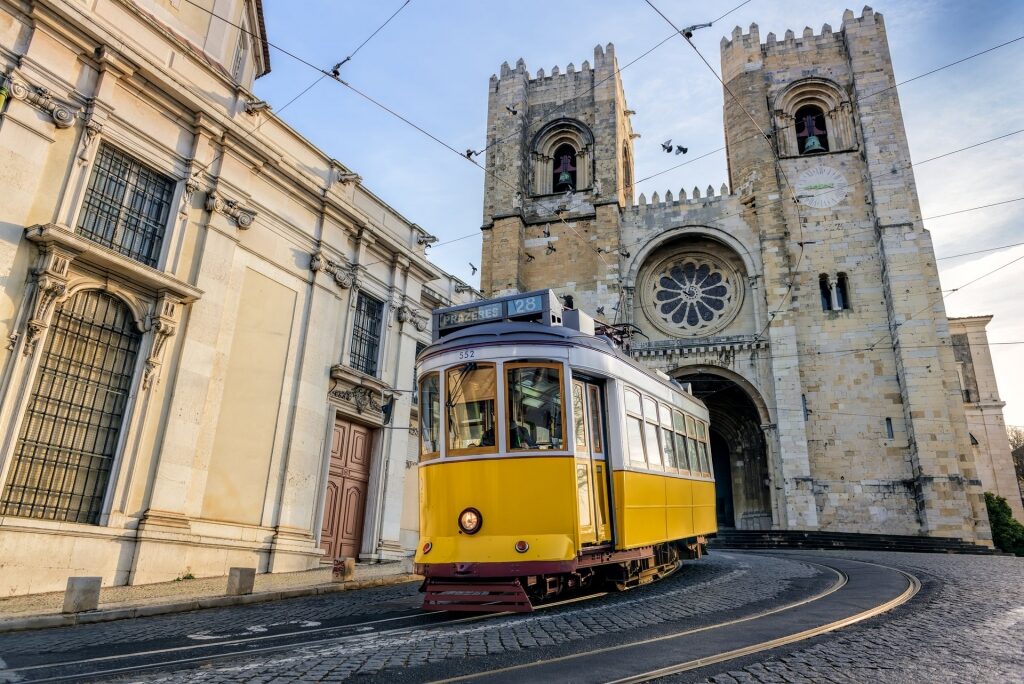
Tram 28
Provided you’re not traveling in peak season (and if you are, simply start extra early), there’s no better way to get oriented than to ride the iconic Tram 28, one of the best things to do in Lisbon. This vintage yellow carriage clanks its way through the most historic parts of the city, climbing impossible gradients and rattling round the tightest imaginable corners.
Hop on at Praça Martim Moniz and enjoy the view as the tram clatters through the heights of the Alfama district, the elegant city center, and uphill again to Bairro Alto, one of the best neighborhoods in Lisbon. Jump off at Praça Luis de Camões and walk one block to Manteigaria for your first taste of pasteis de nata, Lisbon’s famous custard tarts. These little bites of heaven, made on the premises, are served warm, with cinnamon-dusted custard encased in flaky pastry.
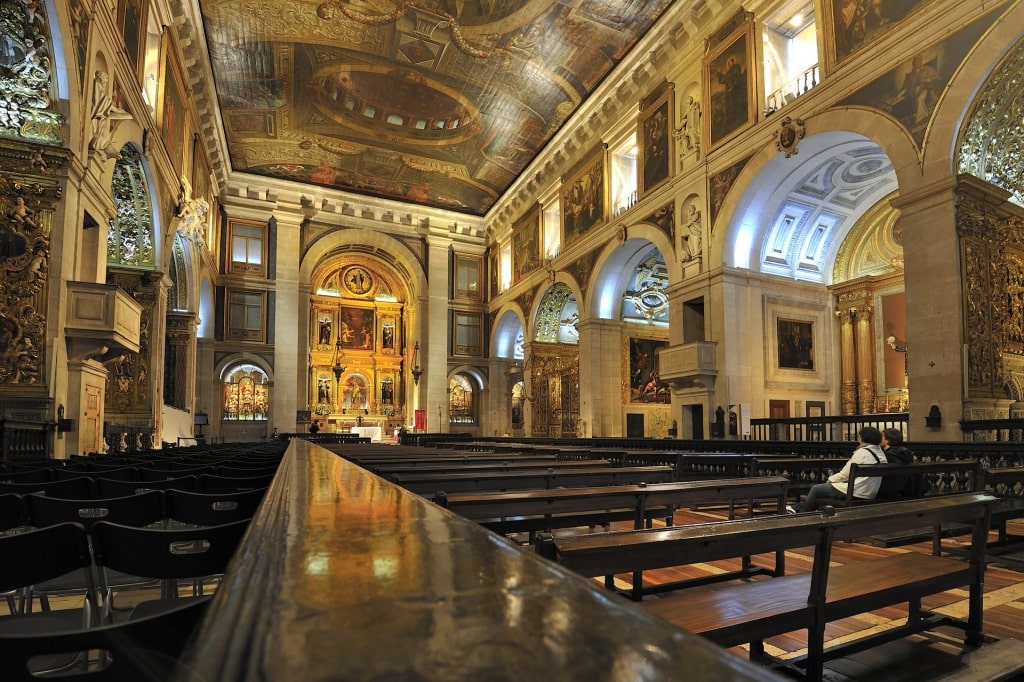
Igreja de São Roque
You’ll be back in Bairro Alto later, but visit one astonishing site before you head down the hill again. The Igreja de São Roque is an unassuming-looking church, but the plain façade conceals incredible riches. You’ll be dazzled by the gold, marble, and Florentine azulejo tiles, while the Capela de São João Baptista is a vision in amethyst, alabaster, lapis lazuli, and Carrara marble.
Wander from here to the peaceful square of Largo do Carmo, overlooked by the ruins of the Convento do Carmo. Destroyed by the 1755 earthquake, its haunting remains stand as a memorial.
11 a.m.: Explore Baixa District
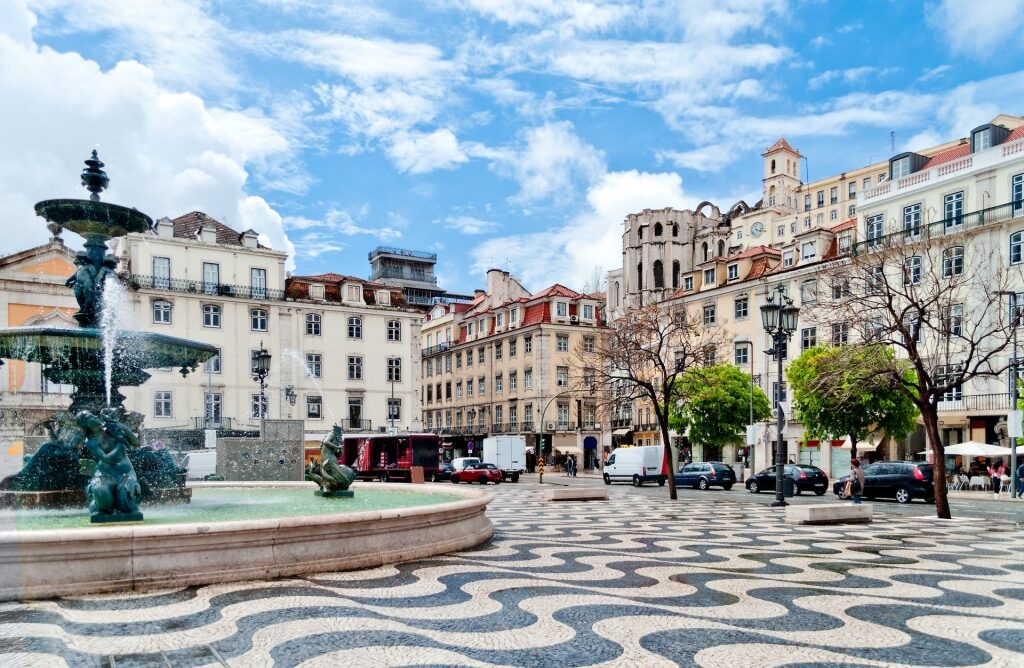
Rossio Square, Baixa District
Just beside the convent, you’ll find another city icon: the Elevador de Santa Justa, a neo-Gothic style wrought iron elevator designed by an apprentice of Gustav Eiffel. This rather odd-looking structure connects Bairro Alto with Baixa. Take in the views from the platform on top—one of many opportunities to gaze out across the city—before riding down and heading for Rossio.
Officially called Praça Dom Pedro IV, Rossio square is the heart of the city. It’s located in Baixa, or Lower Town, a district spread across a valley between the Bairro Alto and Alfama hills. Completely rebuilt after the 1755 earthquake, Baixa is a grid layout of elegant, 18th-century mansions and wide boulevards that join two squares, Rossio and the waterfront Praça do Comércio.
Time permitting, you could browse the designer stores along the grand, palm-lined Avenida da Liberdade, Lisbon’s answer to the Champs Elysées, which leads inland for a mile from Rossio to the lush Parque Eduardo VII, named in honor of Britain’s King Edward VII.
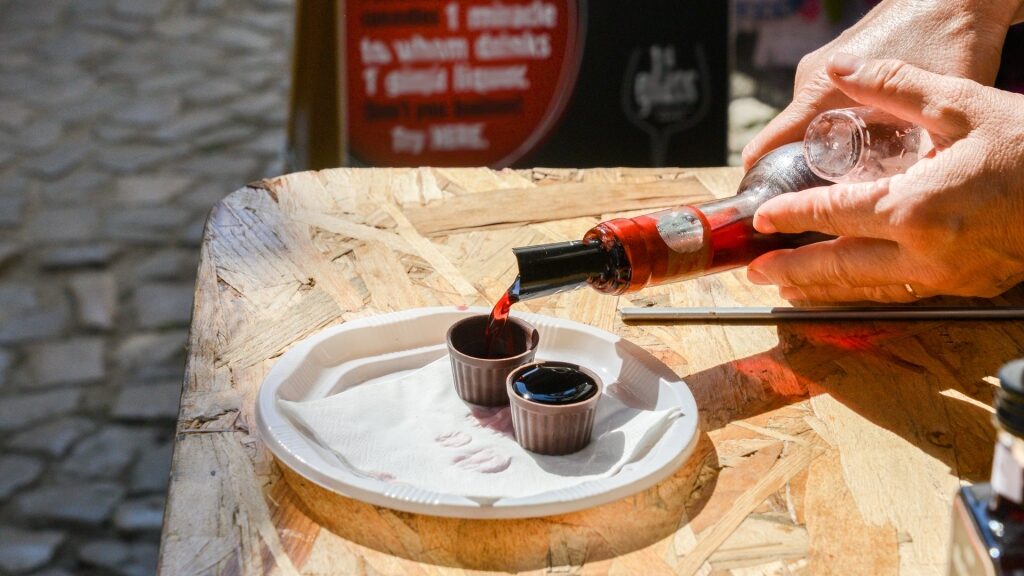
Ginja
Take a moment to absorb the buzz of Rossio, with its splashing fountains, ornate statues, and sidewalk cafés. If it’s not too early for alcoholic refreshment, take a short detour at the northern end of the square to the A Ginjinha bar for a sample of Ginja, Portugal’s traditional cherry liqueur.
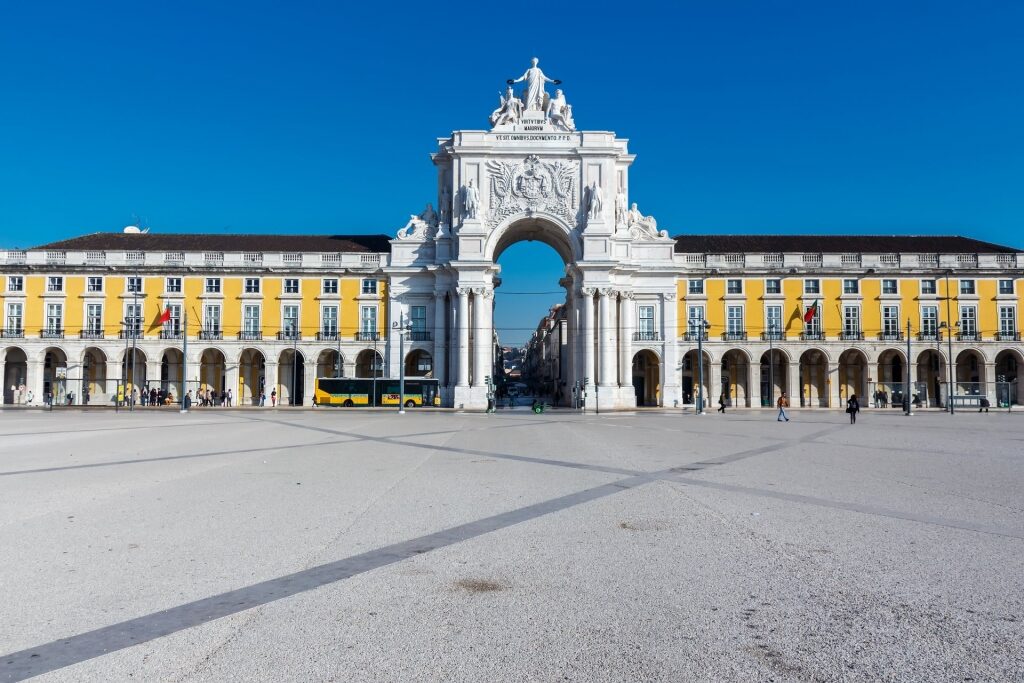
Arco da Rua Augusta
Next, wander towards the waterfront and discover some of the best places to shop in Lisbon. Stop at Arco da Rua Augusta, a triumphal arch on the elegantly colonnaded Praça do Comércio, built to commemorate the city’s reconstruction after the earthquake. There are wonderful views from the platform at the top across Baixa and the river.
1 p.m.: Graze in Time Out Market

Time Out Market
You can’t beat Lisbon’s Time Out Market, a 15-minute walk from Praça do Comércio, for an indulgent snacking session. Some 30 concessions, all specializing in regional food and drink, occupy this vast gourmet food hall, with communal seating at the center.
With outlets serving everything from sushi to salt cod, steak, pizza, and an entire store devoted to crispy croquettes, this is a favorite with both locals and visitors in the know, and a chance to sample the wares of some of the city’s top chefs.
Read: What to Eat in Lisbon
3 p.m.: Lose Yourself in Alfama
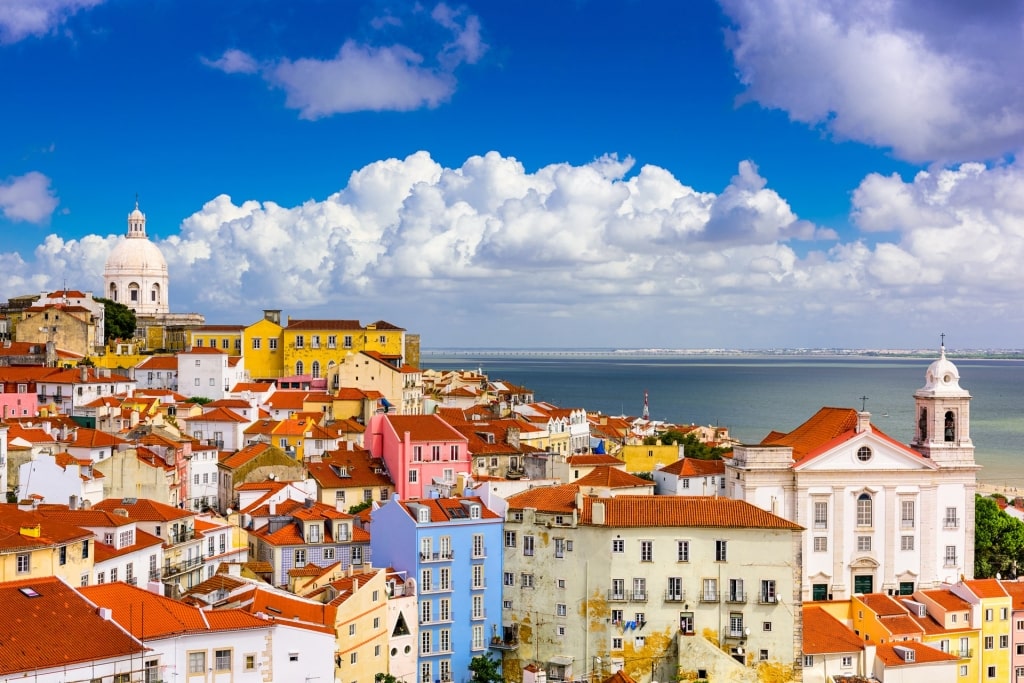
Alfama
Alfama is Lisbon’s oldest district, having survived the great earthquake, and its Moorish origins are clearly visible. Needless to say, it’s hilly here, where cobbled streets wind past tiny whitewashed houses with wrought-iron balconies, the ancient facades decorated with intricate azulejo tiles. Laundry strung across the streets gives the feel of a medieval village rather than a capital city.
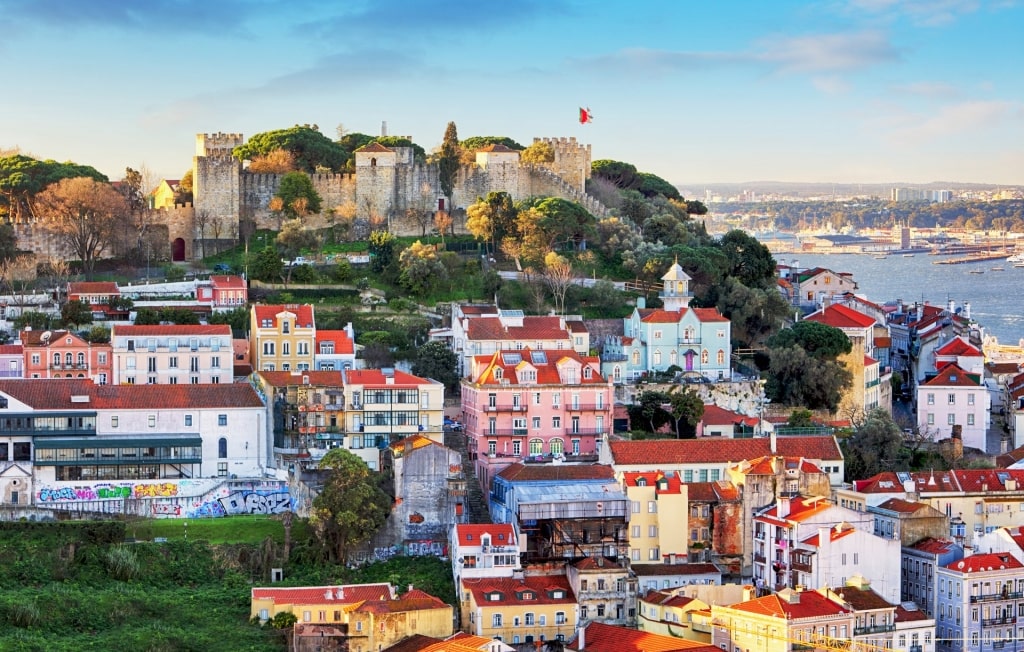
Castelo de Sao Jorge
Tram 28 runs right through Alfama, so you could always save the walk by taking another ride. Sights here include the Romanesque Sé de Lisboa, Lisbon’s biggest cathedral; and the Castelo de Sao Jorge, the 12th-century Moorish castle that presides majestically over the city. Peacocks strut the grassy lawns here, and the views out over the rooftops towards the vermillion sweep of the 25 de Abril Bridge are unrivaled.
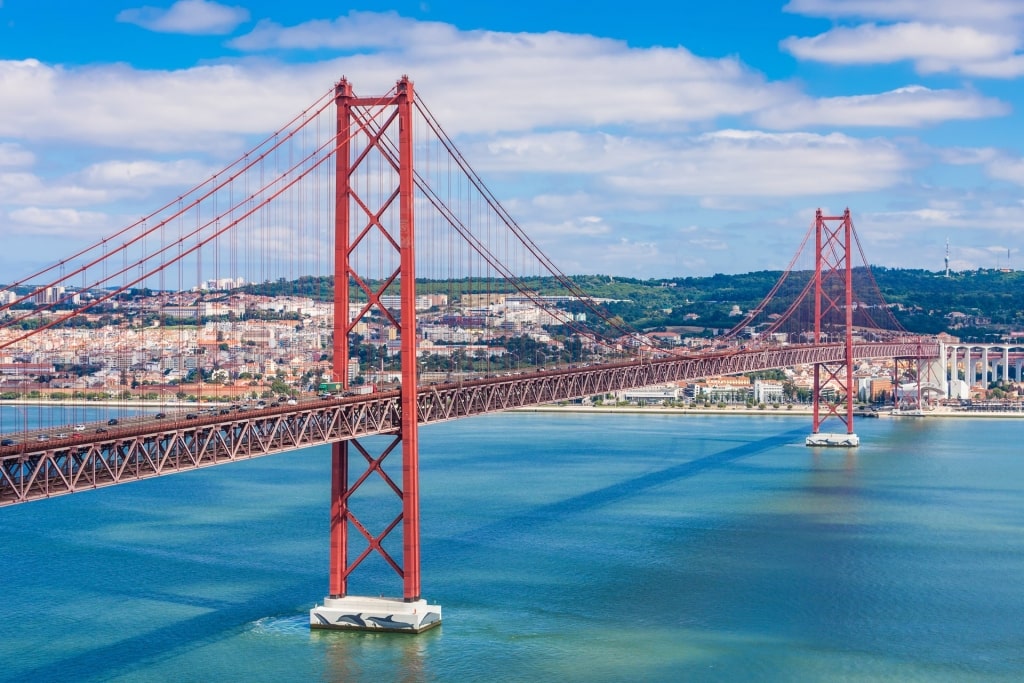
25 de Abril Bridge
While it resembles the Golden Gate Bridge, the Portuguese version, completed in 1966, is actually longer, spanning one and a half miles. It was built by the same company that constructed the San Francisco Bay Bridge—but not the Golden Gate.
As you will have gathered, Alfama is all about the views, and locals and visitors alike can’t get enough. Head for the Portas do Sol miradouro, a favorite sunset spot with vistas over the terracotta rooftops to the Tagus and a relaxed party atmosphere in the evenings.
8 p.m.: Experience Fado

Fado performance
No three days in Lisbon is complete without experiencing Fado, the melancholic music genre that recounts stories of life, the sea, love, and loss. Fado combines influences from Portuguese sailors’ songs with Arabian folk music and is usually sung in small, intimate taverns. Complete focus on the music is essential; it’s considered the height of rudeness to talk, as the singers throw themselves into each performance and train for many years.
There are Fado clubs all over the Alfama and Bairro Alto districts, ranging from formal dining experiences where you’ll have a traditional meal followed by a full, professional recital, to hole-in-the-wall bars where you can sit with a glass of fruity albariño white and listen to up-and-coming fadistas.
Afterward, take in the buzz of the bohemian Bairro Alto, the heart of Lisbon’s nightlife. Here, cool cocktail bars rub shoulders with the inviting gloom of tascas, Portugal’s more rustic restaurants. If you’re still hungry, a platter of local cheese and dried meats in one of the many wine bars should do the trick.
Saturday
9 a.m.: Head for Belem
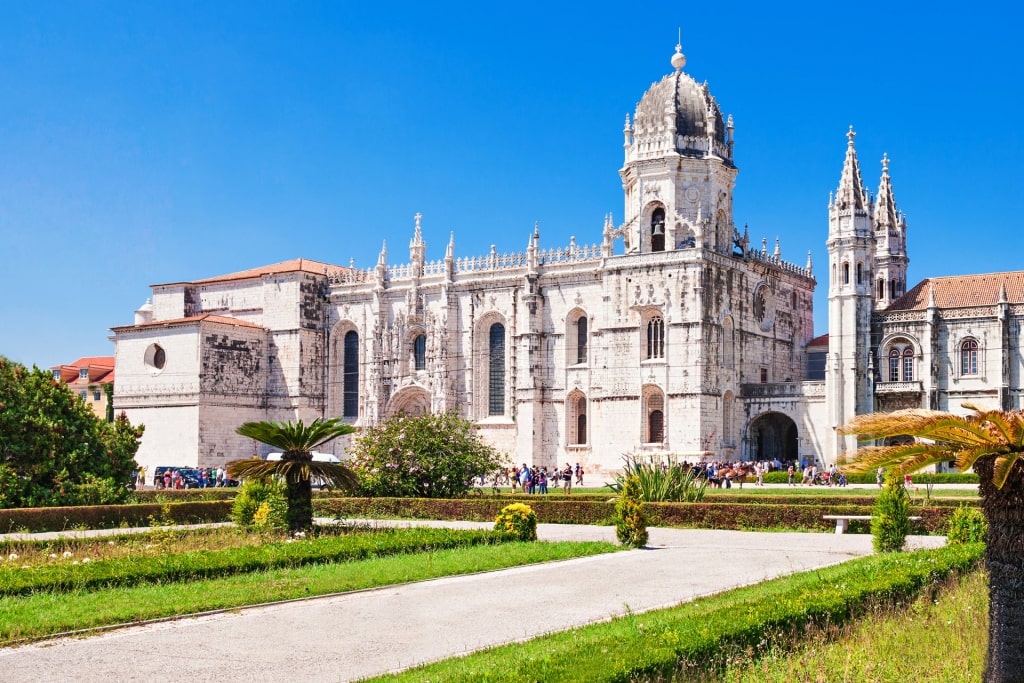
Jeronimos Monastery
Belem packs a mighty punch for a relatively small suburb, housing some of the city’s most iconic sights, fine museums, and more irresistible snacking opportunities. You could easily spend a whole day here; it really depends whether you want to go inside all the museums and monuments, or just enjoy an overview in the middle of your three days in Lisbon.
Belem is dominated by the ornate 16th-century Jeronimos Monastery, an intricate structure of 500-year-old honey-colored stone filled with fountains, carved marble, and vaulted ceilings. The monastery is in the Manueline style, of which you’ll see plenty. It’s named after King Manuel 1, whose reign coincided with this flamboyant, late Gothic period.
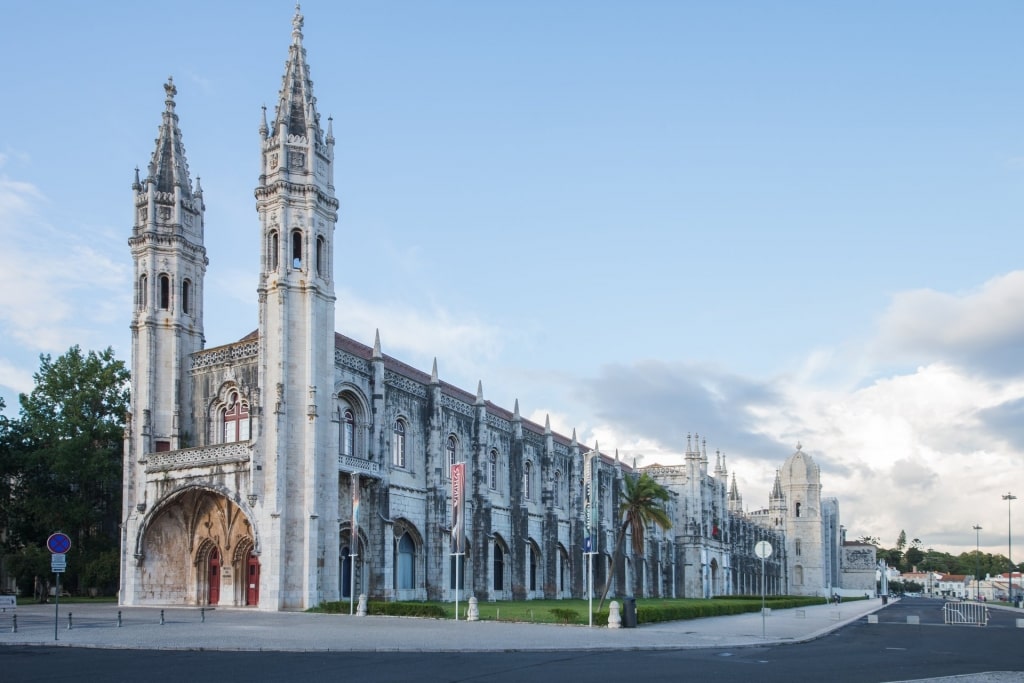
Museu de Marinha
A UNESCO World Heritage Site, Jeronimos symbolizes the golden age of Portuguese discovery; a fitting location for the tomb of the great explorer, Vasco da Gama. You can get more context of the city’s history during this visit, as the monastery houses the Museu de Marinha, devoted to the golden age of navigation, as well as the Museu Nacional de Arqueologia.
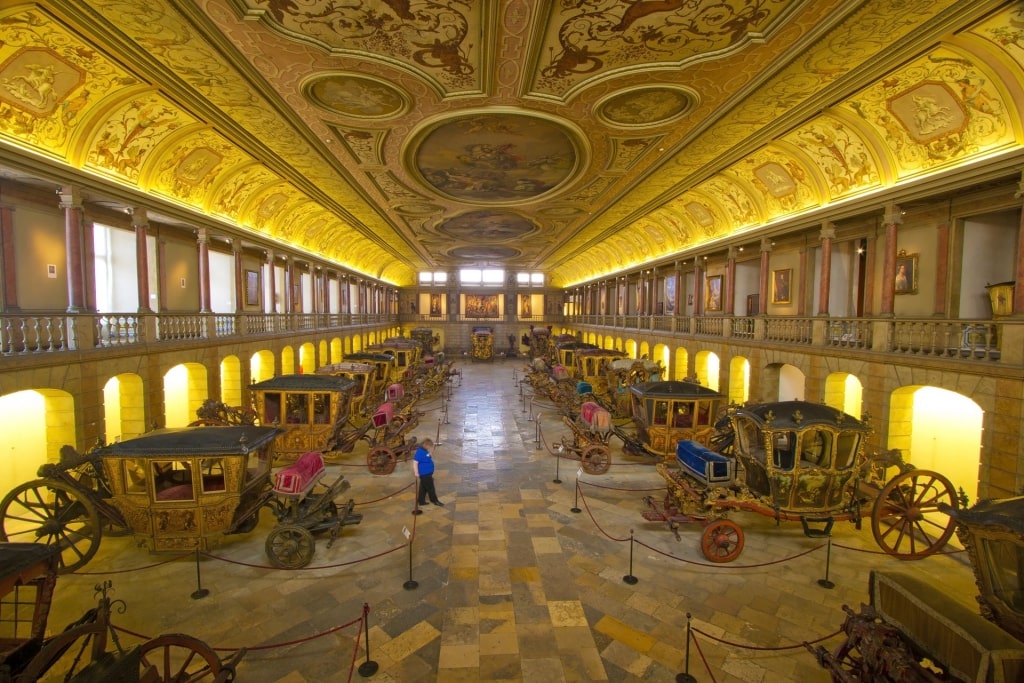
Museu Nacional dos Coches
Next door is the Museu Nacional dos Coches, an impressive collection of ornate, gilded horse-drawn carriages that ferried royals and dignitaries around from the 16th to the 19th century.
Behind the monastery, follow your nose—and the crowds—to Pastéis de Belém for another take on those irresistible custard tarts. This 1837 café is regarded as the original, using its own secret recipe to produce some 20,000 of these tasty treats every day. You’ll need the fuel—there’s a lot more walking to do.
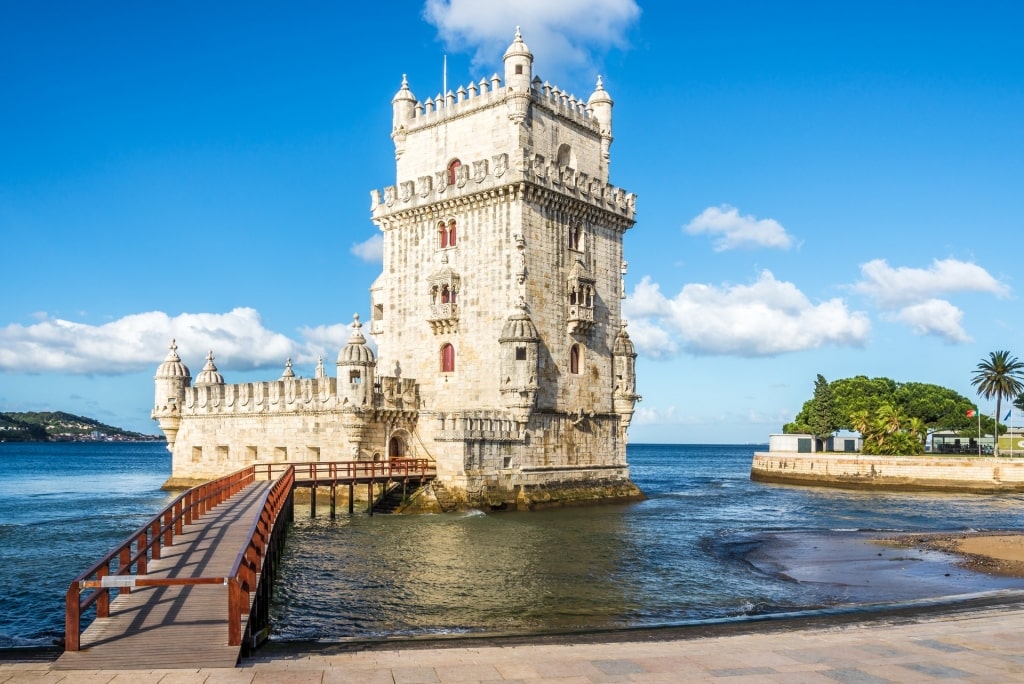
Belem Tower
Next, head along the waterfront to the 16th century Torre de Belem, an ornate tower built in 1514 as a fortress and is now an emblem of the city. Some of the animal carvings represent exotic beasts that were brought on ships by returning adventurers. Look for the rhinoceros gargoyle on the western façade, depicting an animal brought from India in 1513.
A more contemporary structure, and just as photo-worthy, is the Padrão dos Descobrimentos. This monument to the great discoverers was built in 1940 to celebrate 500 years since the death of Henry the Navigator and features more than 30 statues of royals, navigators, missionaries, and other famous Portuguese. This being Lisbon, there’s an opportunity to take an elevator 160 feet to the top for views of the Tagus and the city.
1 p.m.: Enjoy Lunch with a View
Make your way to the minimalist A Margem, located between the two monuments right on the waterfront and the perfect spot for a light lunch. The menu is healthy and eclectic, featuring everything from fresh juices to salads, bruschetta and pasta dishes, as well as cocktails and decadent desserts. On sunny days, it’s packed—you’ll need your sunglasses as the sun sparkling on the water can be dazzling.
3 p.m.: Walk the Aqueduct
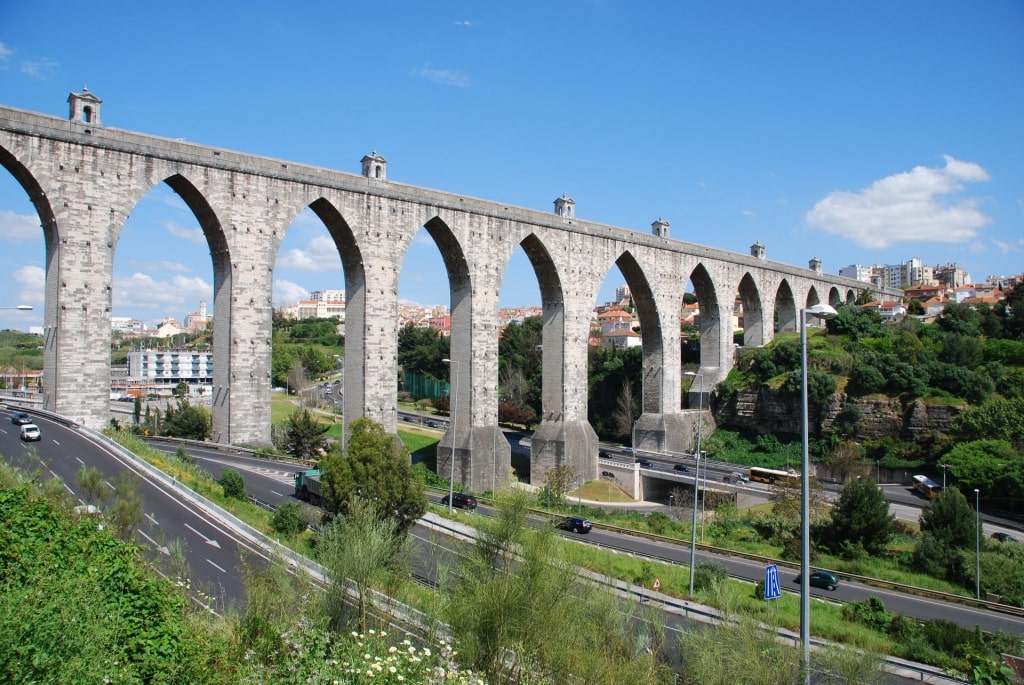
Lisbon Aqueduct
Join an unusual tour to look down on the city from the graceful arches of the Lisbon Aqueduct, built in 1746 to provide the city with clean drinking water. You’ll need a head for heights for this one; when the structure was built, its 109 stone arches were the tallest in the world, spanning 36 miles in length.
Tours take in a stretch of the aqueduct over the Alcântara Valley, with a visit to the impressive Mãe de Água reservoir. Afterward, walk through the Chiado district, with a chance to relax one of the many old cafés and browse the quirky, independent stores.

Jardim Zoológico
Incidentally, if you’re traveling with children and the charm of riding the streetcars and visiting historical attractions has worn thin, Lisbon has two great attractions for families. The Jardim Zoológico, north of the Parque Eduardo VII, is the city’s zoo. Even better is the Parque das Nações, east of the city, where you’ll find a magnificent oceanarium with four marine habitats, aquatic life a-plenty, and a strong conservation message.
8 p.m.: Sample Spectacular Seafood
Head into the city center to sample Portugal’s much-underrated cuisine. Cervejaria Ramiro, on Avenida Almirante Reis, is one of Lisbon’s best-loved seafood restaurants. Always busy, the eatery spans three floors and offers an extensive wine and beer list and constant buzz as chefs prepare the freshest mariscos. You’ll certainly want to try the garlic shrimps.
Read: Beginner’s Guide to Port Wine
Sunday
9 a.m.: See Castles in the Countryside
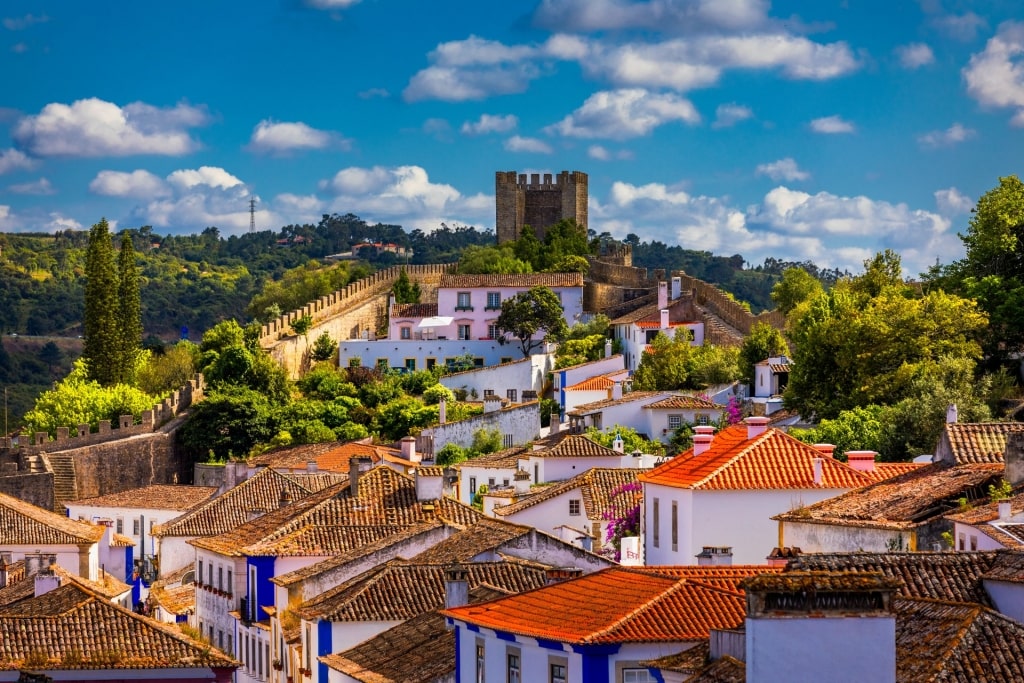
Obidos
One of the great joys of Lisbon is that there’s so much to do outside the city limits, with relatively short travel time. One of the best day trips from Lisbon is the medieval citadel of Obidos, less than one hour away, its origins dating back to 308 BC.
The journey itself is a wonderful opportunity to take in the lush, wooded countryside and rolling hills before the first sighting of the hilltop town, encircled by solid fortifications. Roam the cobbled streets, admire the tiles that adorn the old buildings, and shop for souvenirs, from bright ceramics to tiles and cork products.
If you prefer a shorter journey and are new to the region, then visit Sintra, which is much closer to the city. Sintra is straight out of a fairytale, surrounded by lichen-draped forests and dominated by a series of extravagant aristocratic palaces.
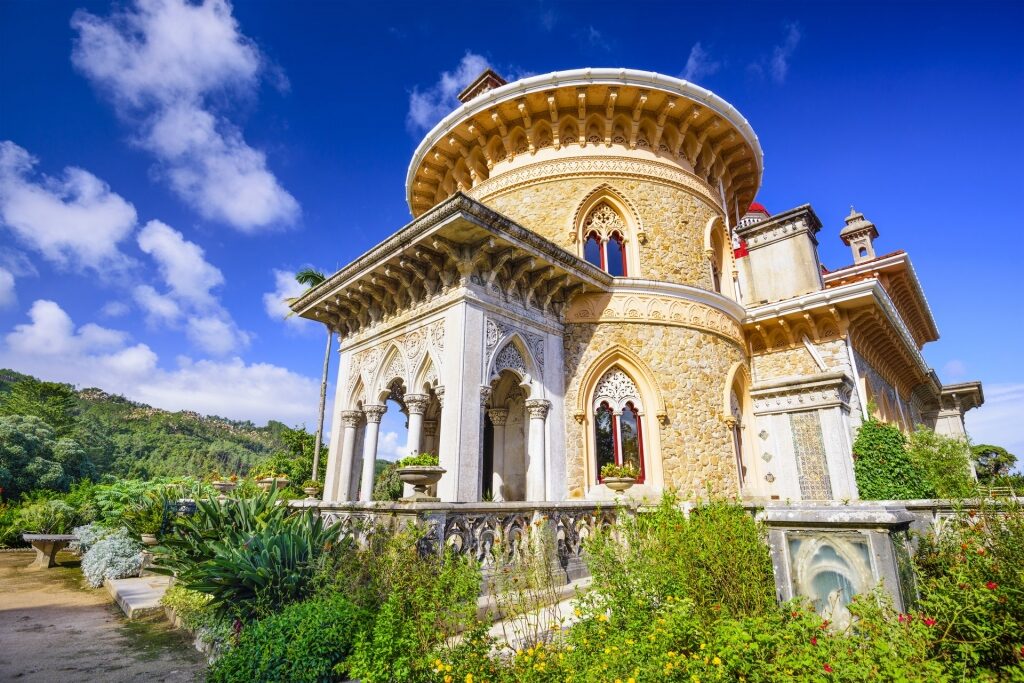
Palacio de Monserrate
See the whitewashed Palacio Nacional de Sintra, built by the Moors in the 13th century, distinguished by its twin conical towers and some of the most beautiful and authentic azulejo tiles that Portugal is famous for. Then there’s the Gothic-Indian folly, Palacio de Monserrate, with its dazzling gardens.
Perhaps the best thing to do in Sintra, though, is to visit the ochre-and-red Pena Palace, a turreted, 19th-century confection crammed with elaborate carvings, flower-filled terraces, and mythological statues.
1 p.m.: Share Some Local Snacks
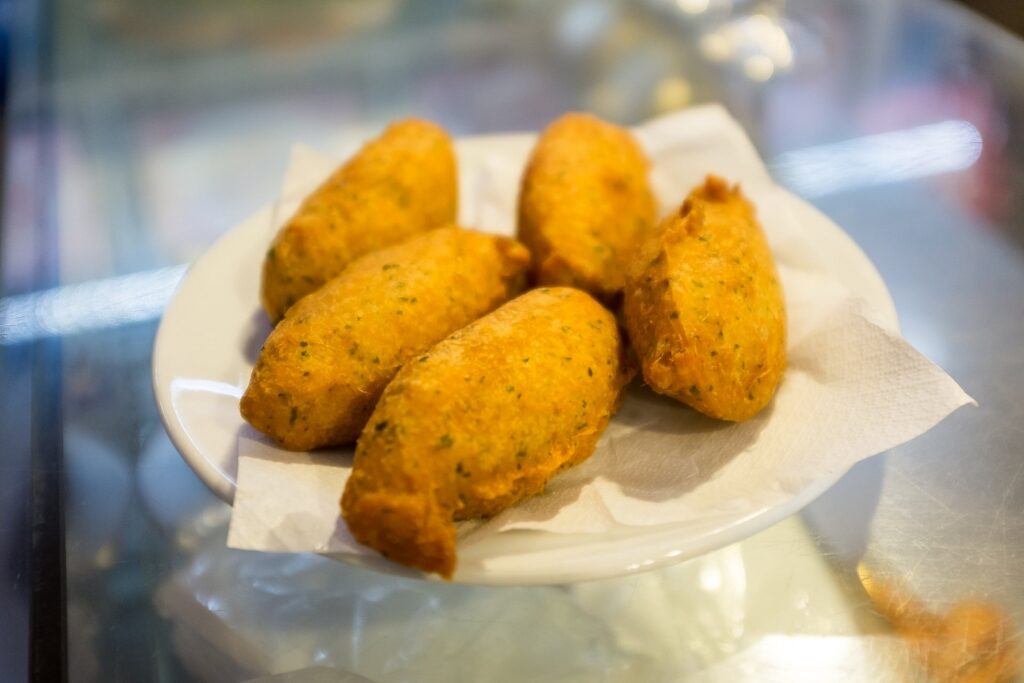
Petiscos
Portugal’s answer to tapas, petiscos are small, tasty snacks designed for sharing. You’ll find a creative twist on the classics in Sintra’s Tascantiga, a vintage-themed hideaway in the town center, with items like chorizo lollipops, fried cod, and fresh octopus on the menu, as well as cheese and dried meat platters.
4 p.m.: Immerse Yourself in Art
Back in the city, head to the splendid Museu Gulbenkian just north of Parque Eduardo VII for one last and hefty dose of culture. The riches of the collection, left to the city by Armenian oil magnate and philanthropist Calouste Gulbenkian, are astounding, from Impressionist paintings to Flemish old masters, Chinese porcelain, and Islamic art.
The contemporary wing alone houses some 9,000 works from the 20th and 21st centuries, while you absolutely mustn’t miss the exquisite Art Nouveau jewelry and art by Lalique.
The Gulbenkian is exactly what’s so fabulous about this city; the surprises just keep unfolding. Three days in Lisbon is just a taster. Without a doubt, you’ll come back to discover more.
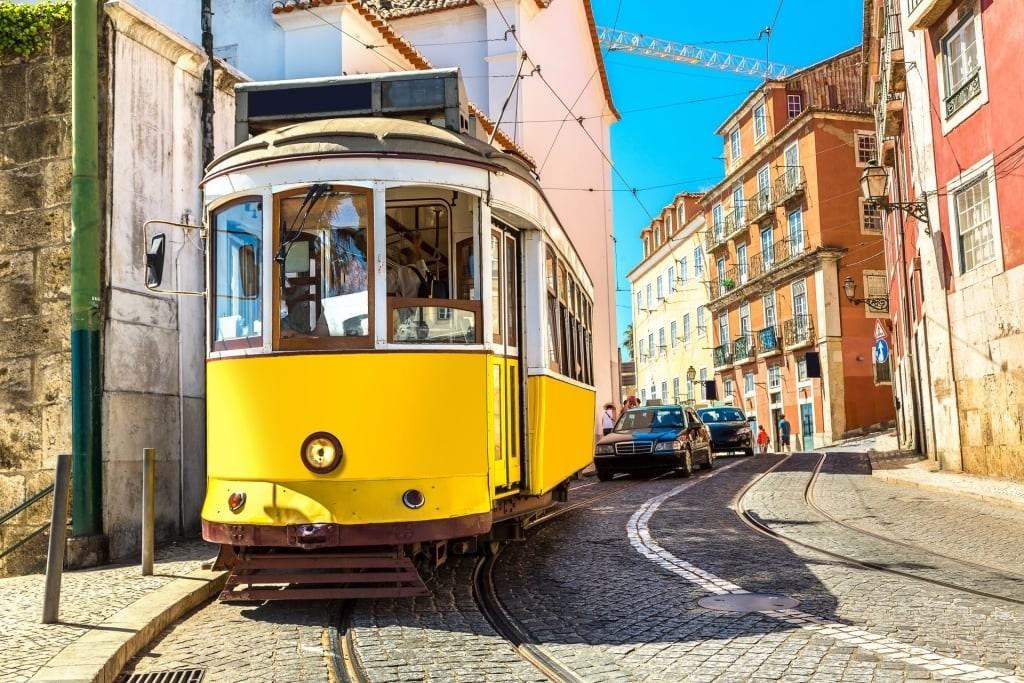
Tram 28
Uncover more of the city’s secrets and culinary delights on a cruise to Lisbon. Explore our cruise itineraries online and book a vacation to this endlessly enchanting country.
